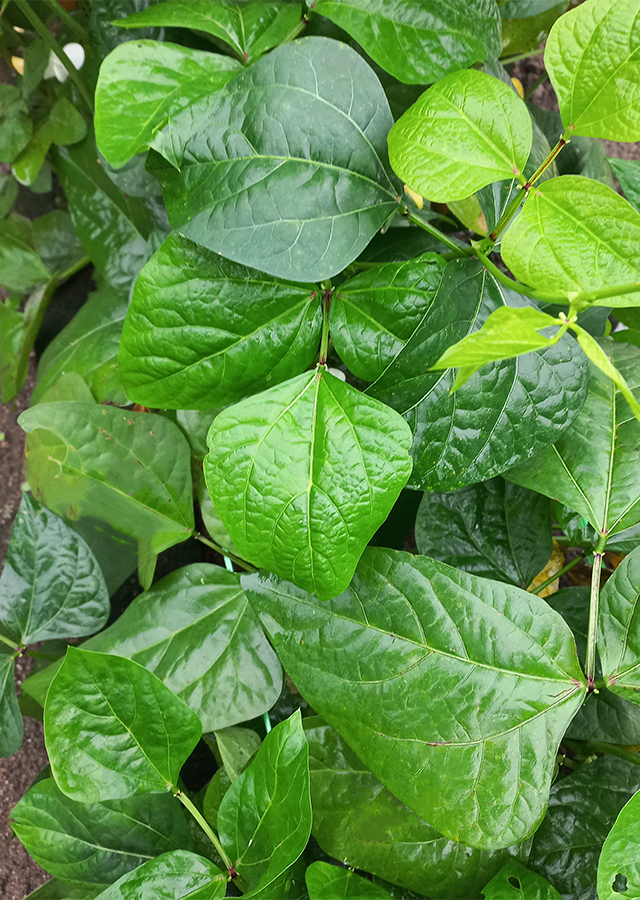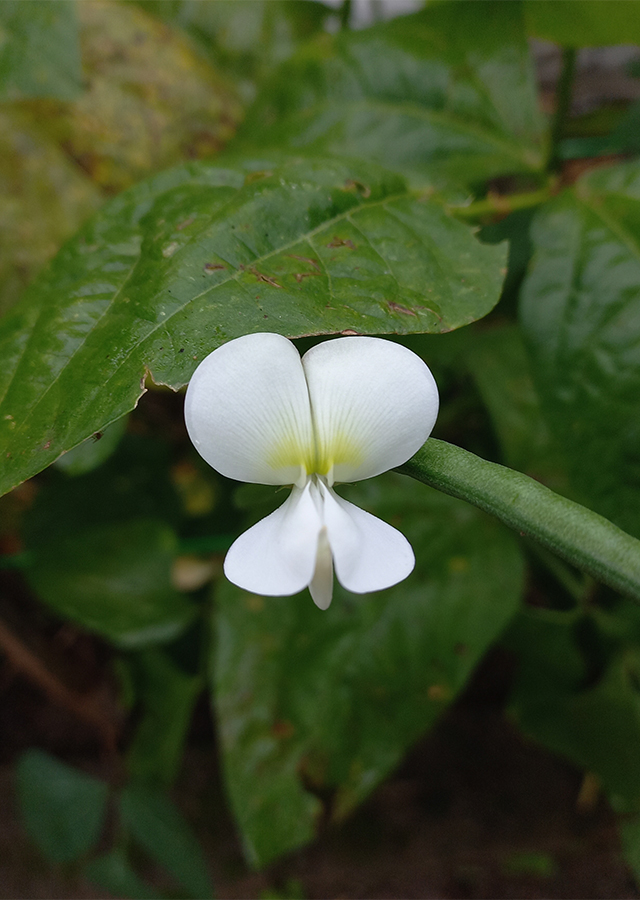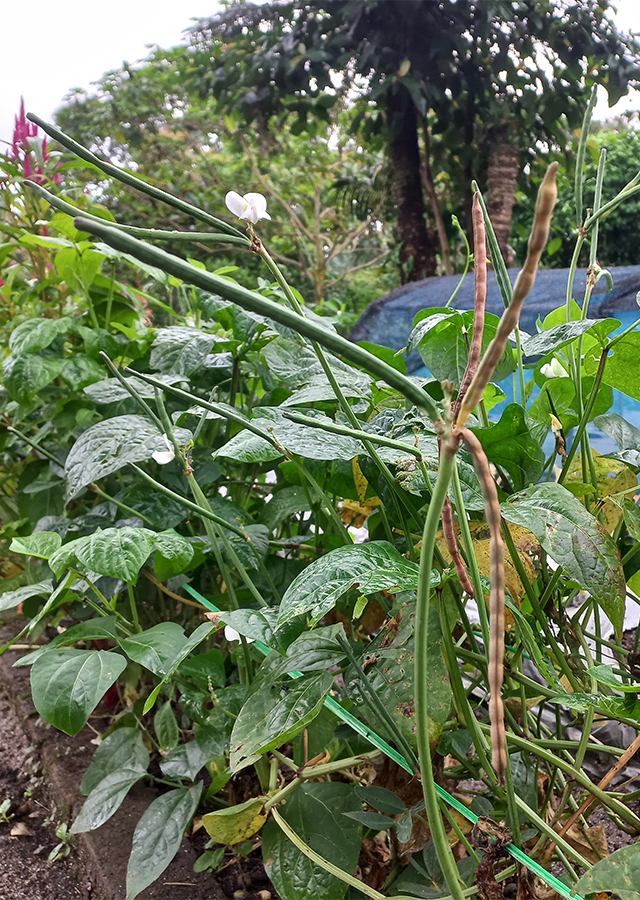Traditional Herbs from Vigna unguiculata subsp. unguiculata
treat_dental_disease
- Take enough cowpea leaves and wash them until clean.
- Chew the leaves to treat toothache.
cure_and_bind_broken_bones
- Prepare enough cowpea leaves then wash them until clean.
- Gresh them until it becomes a paste.
- A paste is used to heal and bind broken bones
What is Vigna unguiculata subsp. unguiculata Looks like??



Parts of Vigna unguiculata subsp. unguiculata that could be used
- Leaves
- Seeds
- Roots
Vigna unguiculata subsp. unguiculata Distribution
Cowpeas originate from Cape Verde, and tropical areas of South Africa. Cowpeas are commonly cultivated as a nutritious food source in the southern United States, the Middle East, Africa, Asia, and throughout tropical and subtropical regions. Cowpea seeds can be eaten when they are still green or left to dry. Immature seeds are used as vegetables, can be steamed, boiled, fried, etc. Ripe seeds are commonly added to soups and stews, ground into powder, and used with cereal flour to make cakes, bread, or fermented. The seeds can also be grown (made into sprouts) which can then be eaten raw or cooked by saut�ing. Roasted seeds can be ground into powder and used in drinks such as coffee. Young leaves can be cooked like spinach. This cowpea plant also has medicinal properties that are used in traditional medicine.Agroecology of Vigna unguiculata subsp. unguiculata
Cowpeas grow in tropical lowlands, and can also be cultivated at altitudes of up to 1,500 m above sea level. It grows best in areas where annual daytime temperatures are in the range of 20 - 35 °C, but can tolerate 10 - 40 °C. The plant cannot tolerate frost It prefers an average annual rainfall in the range of 600 - 1,500 mm, but tolerates 400 - 4,100 mm. Prefers a position in full sun, tolerates light shade. Succeeds in a wide range of soil types, from sandy loam to clay, as long as the soil is well-drained. Prefers pH in the range of 5.5 - 7.5, tolerates 4.3 - 8.8. Good results have been obtained in peat soils, but the plant does not like alkaline soils because this reduces bacterial nodulation on the roots and causes leaf chlorosis.
Morphology of Vigna unguiculata subsp. unguiculata
- The root is a taproot with well-developed lateral roots. Cowpeas have large, round root nodules like pea seeds.
- The cowpea stem consists of several nodes, where each node produces one leaf stalk. On the main stem there are several branches which usually emerge from the lower nodes. Flowers are found on the main stem or on branches which can number up to 15 nodes, with the number of fertile nodes on each plant reaching 5 to 10 fertile nodes.
- Cowpea leaves consists of three leaves (trifoliate) which are located alternately. The leaves are green, oval (ovate) or lanceolate (lanceolate) with a leaf length ranging from 6.5-16 cm and a leaf width of 4-10 cm, with a long petiole (petiole) between 5-15 cm.
- The flowers\u00a0are arranged\u00a0in the form of a bunch (raceme) which is found at the end of the flower axis (pedunculus) which emerge from the leaf axils, and each cluster contains 6 to 12 flower buds with very short flower stalks (pedicles). The flower consists of: (1) green bell-shaped petals (calyx), (2) crown or flower crown (corolla) consisting of 5 pieces (1 flag, 2 wings, and 2 claws) which are white or yellow purple, (3) stamens numbering 10 which are collected into 2 groups (diadelphous), namely 1 free and the other 9 united, with the same anthers. The ovary (ovary) consists of several chambers.
- The fruit (pods) of cowpeas when they are young are light green or dark green and when they are old the pods are cream, brown or black, measuring 8-10 x 0.8 - 1 cm, containing 8 to 20 seeds.
- Cowpea seeds vary in size, shape, or color (cream, brown, black, striped, and red) with a weight of 100 seeds between 10 and 25 g. The length of the seeds ranges from 2-10 mm and has a white hilum surrounded by a black ring.
Cultivation of Vigna unguiculata subsp. unguiculata
Propagation is done generatively by seeds. First soak the seeds for 12 hours in warm water and sow them 1 - 3 cm deep in the soil. Seeds germinate best when the soil temperature is above 21 �C.
Vigna unguiculata subsp. unguiculata, more details :
Chemical Content of Vigna unguiculata subsp. unguiculataFlavonoids, phenolic compounds (protecateic acid, p-hydroxybenzoic acid, caffeic acid, p-coumaric acid, ferulic acid, 2,4-dimethoxybenzoic acid, and cinnamic acid).
Benefits of Vigna unguiculata subsp. unguiculata
Healing and binding broken bones, treating swelling and skin infections, as a mild laxative, treating toothache, fighting stomach worms, insect bites, antidote for snake bites, treating epilepsy, chest pain, constipation, dysmenorrhoea and headaches.
Simplisia of Vigna unguiculata subsp. unguiculata
- Prepare the cowpea seeds, wash them thoroughly.
- Dry them in the sun or in an oven at a temperature\u00a040\u00b0C until the moisture content\u00a010%.
- Choose them using a blender until they become powder then sift them until you get a size of 80 mesh.
- Store in a clean and airtight place.
Another Facts for Vigna unguiculata subsp. unguiculata :
Synonym of Vigna unguiculata subsp. unguiculataDolichos capitatus Wall., Dolichos catjang L., Dolichos catjang Burm.f.
Habitus of Vigna unguiculata subsp. unguiculata
Herb. Erect or creeping herbaceous annual, reaching 4 m in height
Habitat of Vigna unguiculata subsp. unguiculata
- Roadside", "Bush Area", "Land
No comments:
Post a Comment